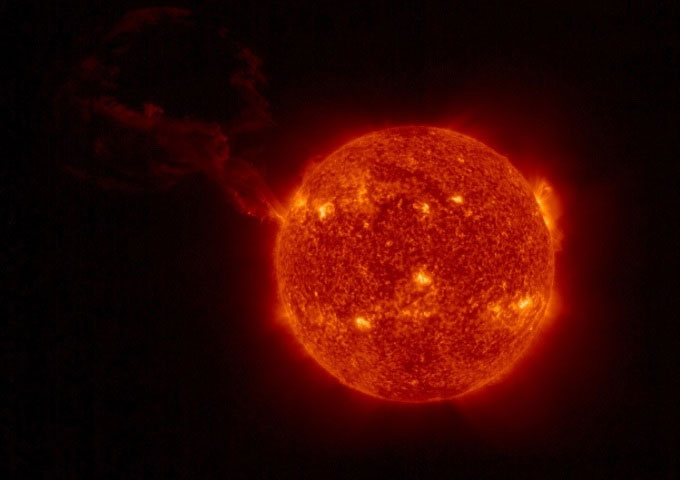The Solar Orbiter spacecraft from NASA and ESA monitors a solar eruption from a close distance.
The Solar Orbiter spacecraft conducted a significant observation in space by capturing images of a massive solar eruption. This is the largest eruption ever observed in a single image of the solar disk, contributing to the collaborative mission between NASA and the European Space Agency (ESA) to better understand the activities of our star.

The solar eruption on February 15. (Image: ESA)
“A solar eruption is a large structure of disturbed magnetic field lines that maintains a dense plasma density suspended above the surface of the star, sometimes taking the form of an arch“, ESA explained on February 18 along with an image captured three days earlier.
According to ESA, solar eruptions are often accompanied by coronal mass ejections (charged particle eruptions that the Sun occasionally emits). If the eruption is directed straight towards Earth, it can sometimes disrupt satellite operations, power lines, and many other essential infrastructures. The observation on February 15 recorded an eruption that extended millions of kilometers into space, but the coronal mass ejection was not directed towards Earth. This event was captured using the Extreme Ultraviolet Imager onboard the Solar Orbiter.
“Other space telescopes, such as the Solar and Heliospheric Observatory, regularly monitor this type of activity, but either from a closer or farther distance, which obscures the brightness of the solar disk and helps capture detailed images of the corona. Therefore, the eruption observed by Solar Orbiter is the largest recorded in a single frame alongside the solar disk. At the same time, SOHO can provide supplementary images from a greater distance,” ESA stated.
The next close flyby of the Sun by the Solar Orbiter will take place on March 26, at a distance of about 0.3 times the distance between the Sun and Earth (150 million km). Therefore, the Sun will appear larger in images taken a few weeks later.


















































